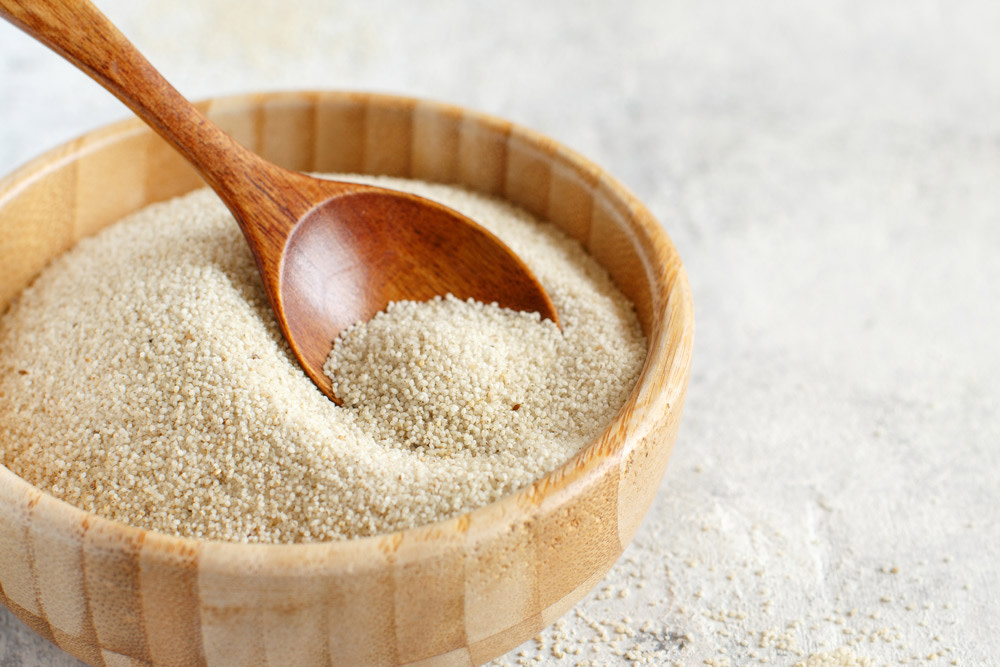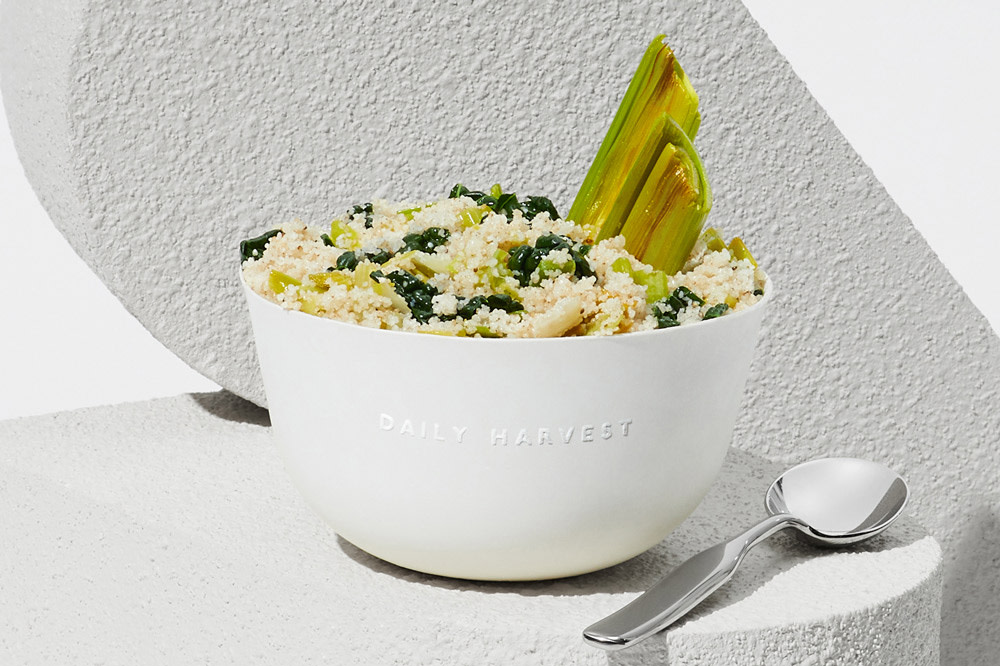
Fonio: The Ancient Grain You Didn’t Know You Needed
- By Daily Harvest
- Updated: January 2025

Some call it the new quinoa. We call it a naturally gluten-free all-star that holds no comparison to its peers. Here’s the deets on fonio and why we dig it (and you should too).

Fonio is an ancient grain that’s native to West Africa. It’s been cultivated for thousands of years, and might even be the oldest African cereal crop in the world (pause and digest). Today, fonio is a staple ingredient in African cuisine and an important part of African economies.
There are two different types of fonio: Acha (Digitaria exilis) is the white variety that’s more widely grown, and Iburu ( Digitaria iburua), is the lesser grown black variety.
Fonio is part of the millet family, which are cereal grasses grown for their teeny-tiny whole grain seeds. Millets are part of an even larger family of grasses called Poaceae, which also includes barley, wheat, rice, and maize.
Taste-wise, fonio has a mild, nutty flavor, and its texture is similar to couscous. It’s a versatile ingredient in the kitchen and comes with nutritional benefits to boot — read on to score the deets..
What makes fonio special? Well, a lot.
Nutritionally, there are two major shoutouts for fonio. First, it’s naturally gluten-free. That’s right, there’s no (as in zero) gluten in fonio, making it a great choice for folks who are gluten-sensitive or gluten-intolerant, but still want to get their grain on.
The second callout is fonio’s amino acid profile. While it’s not especially high in protein (analysis shows fonio is only about 7% protein by weight), fonio contains what scientists deem a favorable amino acid profile — it contains relatively high amounts of the amino acids methionine and cystine (rarely found in other grains).
*TLDR: the total amount of protein in fonio is nothing to write home about, but the amino acid profile is pretty sweet.*
Other benefits fonio brings to the table?
Fonio is a resilient crop that’s straight up easy to grow. It can thrive in poor, rocky and sandy soils that don’t get much water. It has complex roots that extend deep into the soil, which helps prevent soil erosion. Plus, fonio grows fast, reaching maturity in just six to eight weeks. It can also withstand harsh conditions (think droughts or floods).
*TLDR: Fewer resources are needed to get fonio on the table, which is a win for the environment and the people who grow (and eat) it.*
Now, back to taste. There’s a reason fonio has been served to guests-of-honor and royalty in African cultures for centuries — this tiny whole grain is distinctively delicious.
Fonio is nutty and earthy. Yet, it’s mild enough to play well with others. This means fonio can hold its own as a simple grainy side, and has the versatility to be used in more complex recipes.
Need some inspiration? Start simple: Serving fonio with a side of veggies and your fave protein for a quick weeknight dinner. When you’re ready to explore, level up a familiar dish by sub-ing fonio in recipes where you’d typically use a different, more common whole grain — think: fonio tabbouleh, fonio pilaf, oatmeal-but-make-it-fonio. Anything goes.
More of a heat-and-eat kind of person? Look to our Leek + Fonio Grits Forager Bowl, a riff on creamy grits that stars fonio as a base. We fold in a luscious amount of parsnip puree and nutritional yeast to make it extra dreamy.

Now, onward! Explore more fonio-forward meals and be your own guest-of-honor in the kitchen.
We take care of food so food can take care of you. Stock up on our deliciously nourishing best sellers with fonio at daily-harvest.com.
Important Notes: Unless otherwise noted, nutrition information is sourced from USDA FoodData Central and reflects the reference amount customarily consumed. These are standardized servings and not necessarily the amount present in the highlighted Daily Harvest recipes. Nutrition information for Daily Harvest products can be found on packages and under "Nutrition Facts" for each product at "dailyharvest.com". Vitamin and mineral functions are sourced from Linus Pauling Institute Micronutrient Information Center.
When would you like your next delivery?
Note On Your Existing Order
Order #{{number}} for your most recent box has already been processed and is still scheduled to arrive {{date}}.
I understand Save CancelYour subscription subtotal must be above $50 for the box to ship. Add your replacement item(s) first and then try deleting this again.
When would you like your next delivery?
Note On Your Existing Order
Order #{{number}} for your most recent box has already been processed and is still scheduled to arrive {{date}}.
I understand Save CancelYour subscription subtotal must be above $50 for the box to ship. Add your replacement item(s) first and then try deleting this again.
Loading...